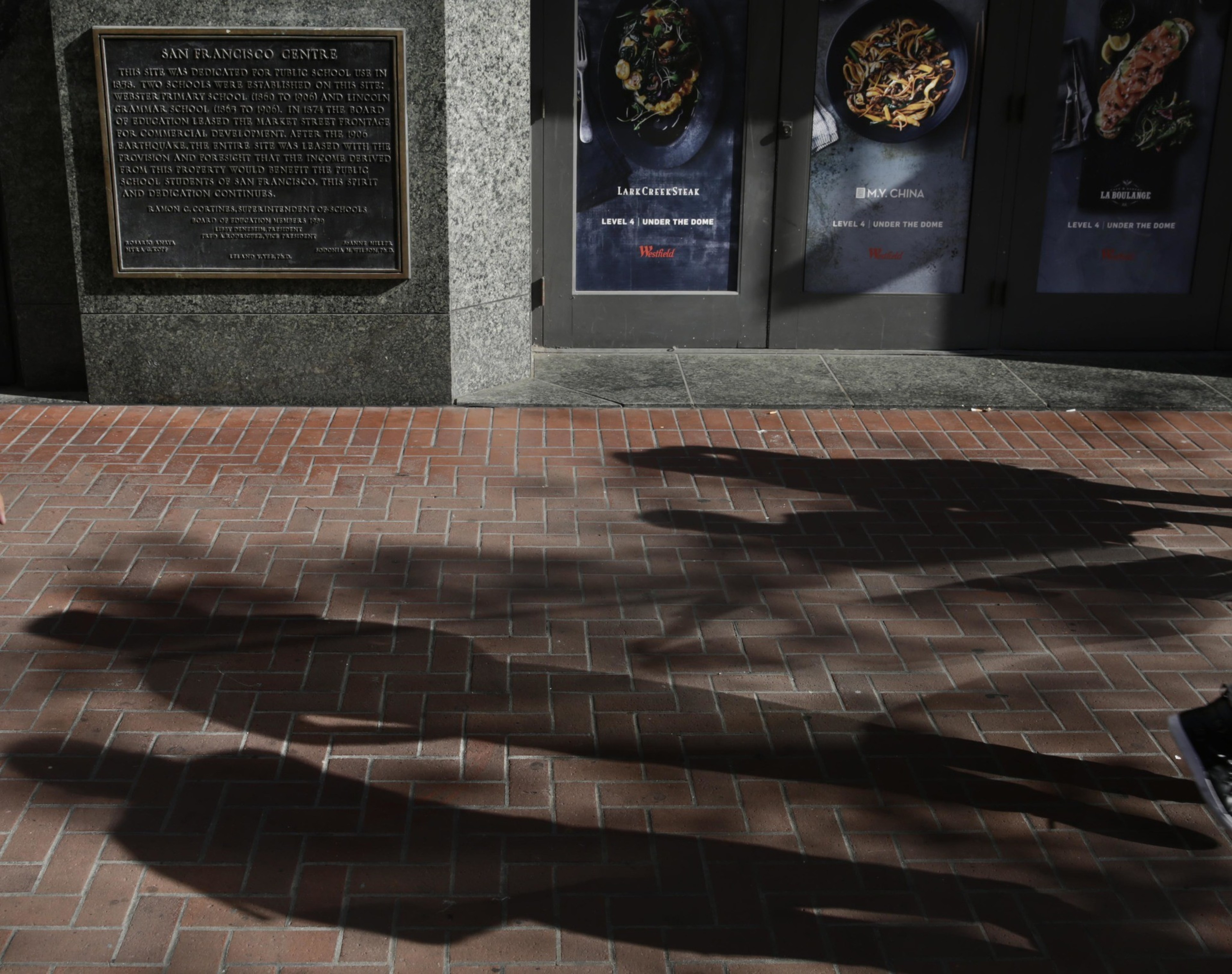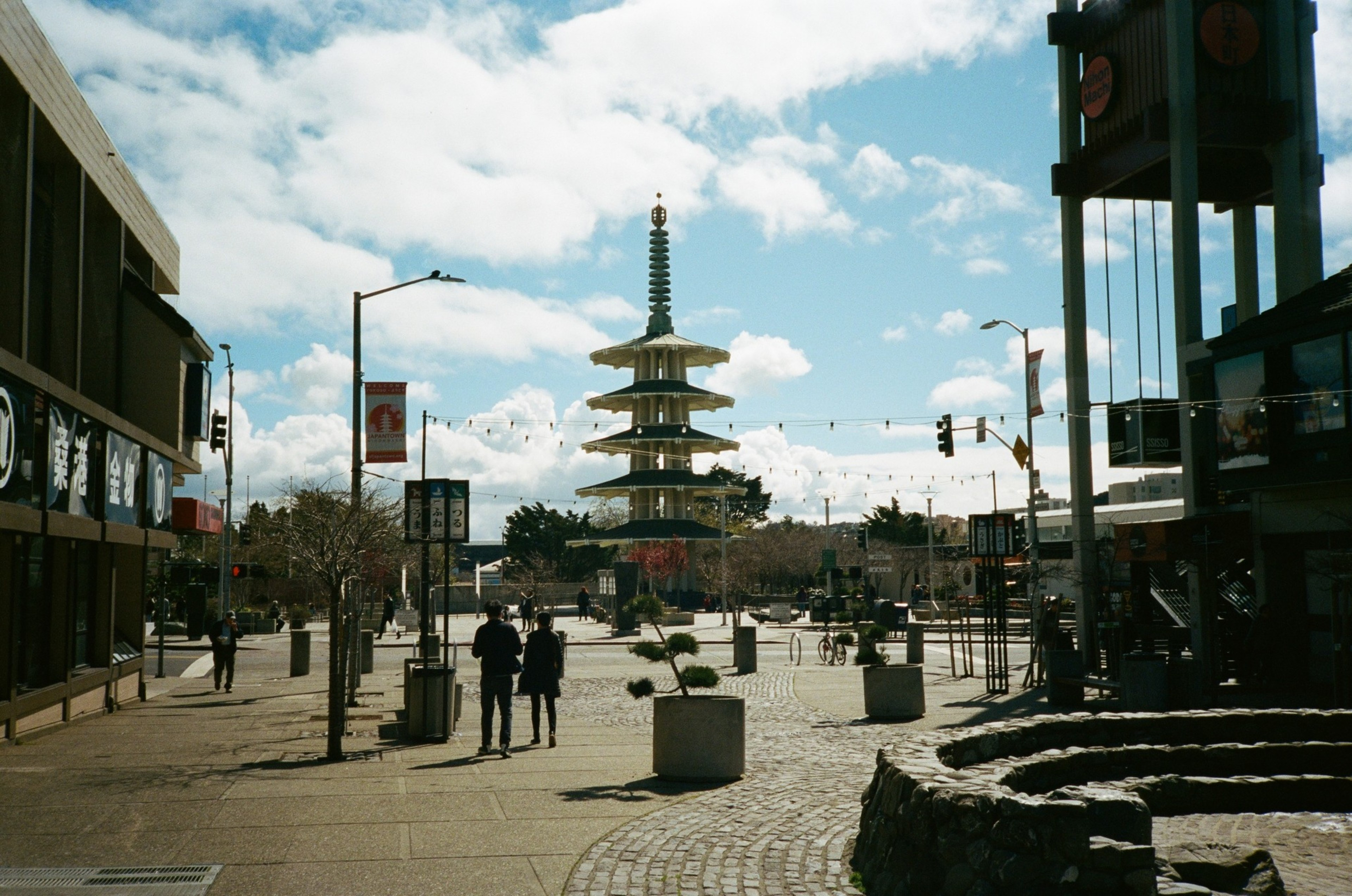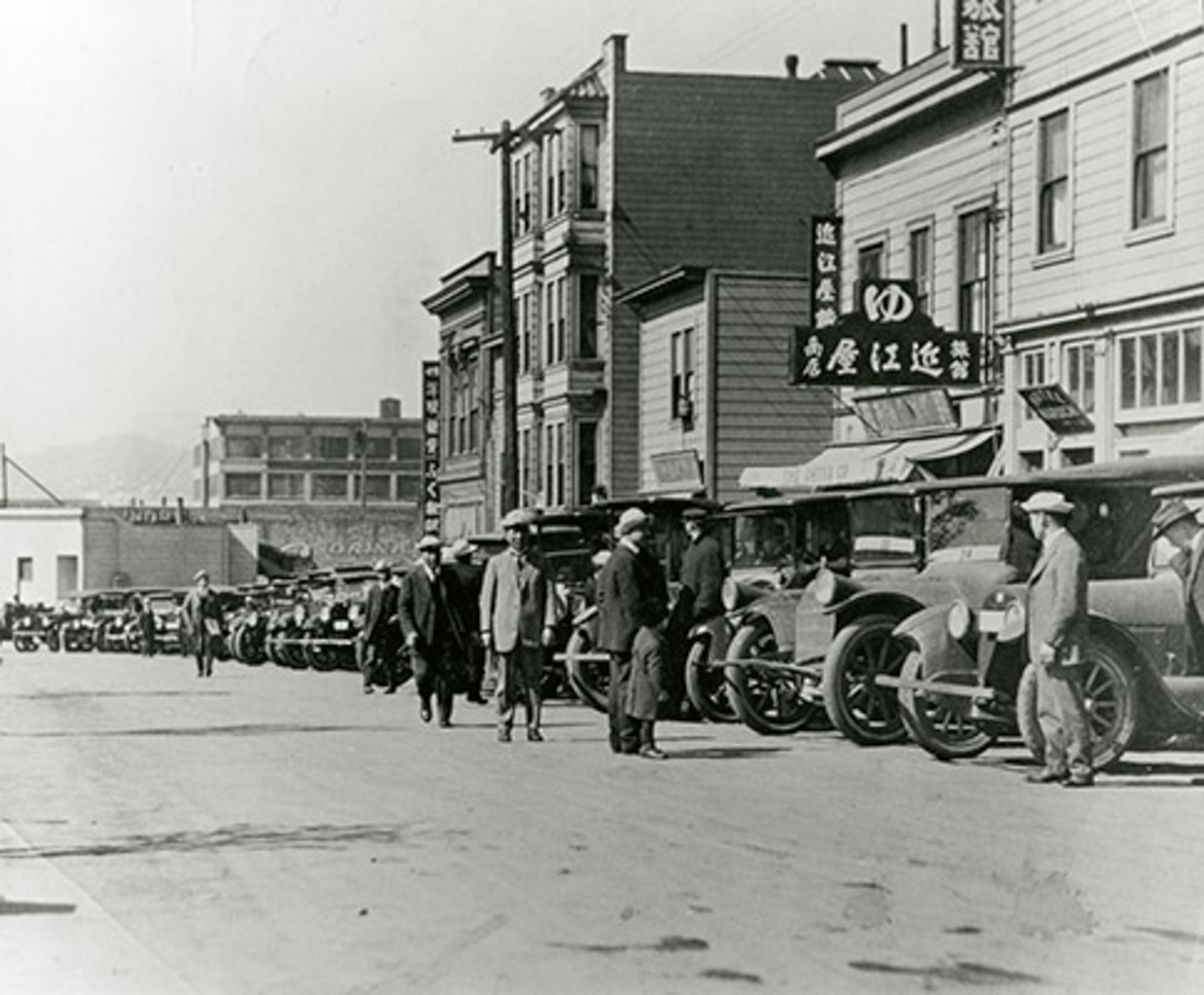In the footprint of the ailing San Francisco Centre, there was once a different world.
San Francisco’s first Japantown, an ethnic enclave that established itself in the 1880s south of Market Street, flourished there until it was razed by the 1906 earthquake.
In one block of Jessie Street between Fourth and Fifth streets Downtown, you could eat at the Meigetsu restaurant, get a haircut at the Kuramoto-Doko barbershop and pick up some treats at the Ishikawa Benkyodo confectionary (and have your teeth cleaned at the Y. Miyoshi dental practice) before sleeping at the Fukuoka-Ya Hotel.
On this same block, there were six hotels, three barbers, a bathhouse, a bookstore and an employment agency—all of them Japanese businesses catering to a Japanese clientele.

What may have been the confectionary originally responsible for the fortune cookie—a Japanese invention—was tucked alongside the businesses on Jessie Street.
The Ishikawa Benkyodo confectionary shop, widely credited (opens in new tab) with the development of the triangular treat, stood at No. 513 before moving to Geary Street post-quake, according to Nihonmachi, a Story of San Francisco’s Japantown, a book published in 1985 by Suzie Kobuchi Okazaki.
The ethnic neighborhood served the everyday needs of the city’s Japanese residents, with signs that would be unreadable to English speakers. The number of Japanese businesses expanded from 90 in 1900 to 545 in 1909, according to the book San Francisco’s Japantown by the Japantown Task Force.
Yet, there were also ropes tossed to the world outside the immigrant community.
A 1902 advertisement in the San Francisco Chronicle with an address nestled among the Jessie Street businesses reads: “Japanese girl wants situation to do housework and cook help; she has kind and good temper.”
Local Japanese businesses also advertised their wares to a Western audience in the newspaper. The classifieds in a 1900 issue of the San Francisco Chronicle include “latest designed, just imported Japanese embroideries” and “bamboo furniture to order” on sale at an Ellis Street shop across from where the Nikko Hotel stands today.
Yet despite these clusters of commerce, this Nihonjin-Machi—literally “Japanese Person Town”—was not like the city’s present-day Japantown.

“There was not a hub,” said LisaRuth Elliott, co-director of the local history organization Shaping San Francisco (opens in new tab). “It was much more dispersed.”
Amid the rampant racism of the era, Japanese settlers were seeking pockets where they felt welcome. The heavy industrial area South of Market would have been one such example because, as a working-class neighborhood, it had fewer restrictions for immigrants and ethnic minorities, Elliott said.
“There were gasworks and all of these chimneys pumping a lot of dirty smoke into the air that was happening around the clock,” Elliott said.
For example, starting in the mid-19th century, the Selby Shot Tower (opens in new tab) at Howard and First streets churned out cannonballs and lead pellets.
It was not a place outsiders would typically visit, unlike San Francisco’s present-day Japantown.

“By some accounts, the Japanese were living in the worst, smokiest, darkest basement living quarters,” said Ben Pease, a local mapmaker who documents the history (opens in new tab) of California Japantowns.
Other working-class immigrant groups moved into the area, which Elliott described as a Babylon where all sorts of languages were spoken and ethnic communities lived side by side.
Japanese people first arrived en masse in San Francisco—which they called “Soko”—in 1869 in search of new economic opportunities. The Issei, Japan-born immigrants, arrived at the Pacific Mail Dock at the end of Brannan and Second streets starting in the late 1800s.
The population swelled over the ensuing decades, and San Francisco had the largest Japanese immigrant community (opens in new tab) of any mainland American city.
Three-fifths of the Japanese population in the United States settled in California, attracted by the state’s mild weather and farming opportunities, Okazaki writes.
There’s precious little for researchers to study about this little-known chapter of San Francisco history—in part because the 1906 Earthquake leveled the area and burned documents, but also because of the vagaries of who gets to write history, Elliott said.

“In white settler culture, there’s the sense of a less-than-human element to anyone who wasn’t white,” Elliott said. “The historians, community leaders and politicians, they didn’t see fit to even name people or write things down about the communities.”
Who knows what the future may hold?
Perhaps the once-Japanese enclave could be resuscitated by embracing its distant, largely erased past. Because while the half-empty San Francisco Centre continues to sputter, another mall across the city, the Stonestown Galleria, is bustling.
And it’s doing so by embracing Japanese businesses, from retail outlets to bowling alleys.
